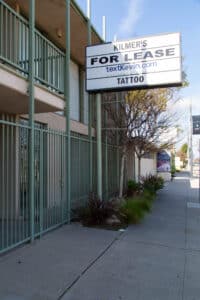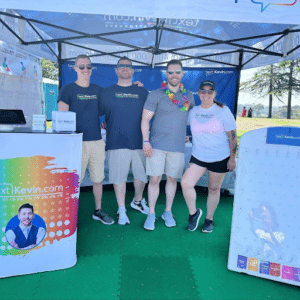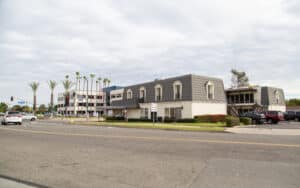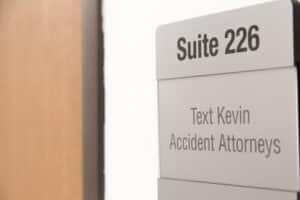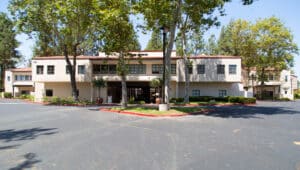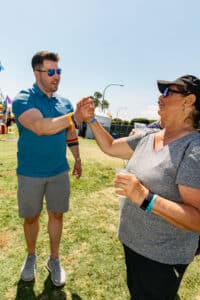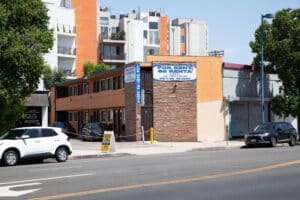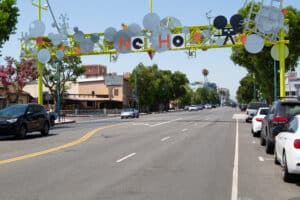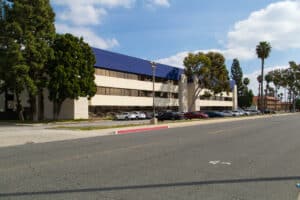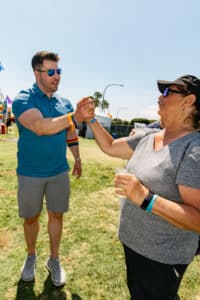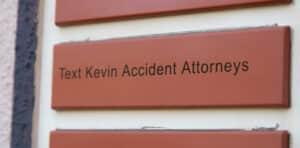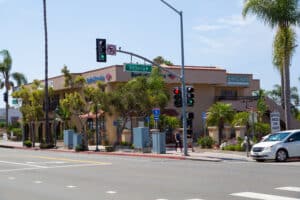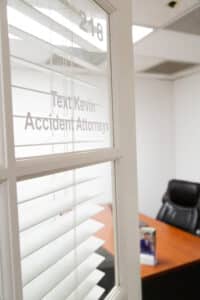Hundreds of thousands of patients suffer from traumatic brain injuries (TBI) each year. Many types of accidents may result in a TBI. They can occur at home, at work, or on the road. Some of the accidents happen because of the negligence of someone else. In those cases, the injured party is owed compensation to cover their medical expenses, loss of property, lost wages, and emotional suffering.
Our Santa Ana traumatic brain injury lawyers can help you recover the compensation you deserve. Crockett Law Group specializes in personal injury cases. Our award-winning attorneys have the experience and expertise required to win tough cases. If you’ve suffered from a brain injury and believe that a third party is at fault, then we are here to help. Pick up the phone and call our office today at (888) 965-3827 for a free case review.
How Do I Know If I Have a Brain Injury?
Determining if a brain injury exists can be difficult. There may not be any outward signs of an injury despite damage to the brain. Only a qualified medical professional can diagnose a TBI. The first step is to report any possible injury to your doctor and discuss any of the symptoms you are experiencing.
A doctor may then proceed with a neurological exam to determine if a brain injury has occurred.
Neurological Exams
There are two types of neurological exams currently accepted in the medical community. The first exam is a set of simple guidelines provided by the Department of Defense. It looks at three different factors:
- The duration of the loss of consciousness during the accident.
- The duration of amnesia that occurs following the injury.
- The duration of an altered mental state following the injury.
Using these factors, the Department of Defense guidelines will classify a TBI in one of three categories. The categories are mild, moderate, and severe. A mild TBI involves a loss of consciousness for less than 30 minutes, amnesia for less than 24 hours, or an altered mental state that lasts less than 24 hours. Moderate and Severe TBIs have an increased duration for these factors.
The second type of neurological exam is called the Glasgow Coma Scale(GCS). The GCS tests the patient’s ability to move their eyes, move their limbs, and follow a series of instructions. Each test receives a rating and the ratings are then added together to create a final score between 1 and 15. A mild TBI will have a score between 13 and 15 while a severe TBI will have a lower score between 3 and 8.
Neuroimaging Tests
If the exam determines that a TBI exists, then the next stage is to receive neuroimaging tests. The two imaging options available are the CT scan and the MRI. Which imaging method is used depends on the injury, the timing, and the preference of the hospital.
CT scans are the more popular option in most emergency rooms. The machine uses a rotating X-ray device to capture several different images of the brain. It will show most of the common signs of a moderate or severe TBI that are not outwardly visible, such as brain bleeding, fractures, and blood clots.
The MRI device doesn’t utilize X-ray technology. Instead, it uses magnetic and radio waves to learn about the condition of the brain. It is capable of detecting bruised tissue and nerve fiber damage. These devices will clearly outline any existing brain injury beyond a doubt. However, they are not always capable of detecting mild brain injuries.
What Are Some of the Leading Causes of Traumatic Brain Injury?
All sorts of accidents have the potential to cause a brain injury. However, some sources are far more common than others. Here’s a look at some of the most common causes of traumatic brain injury in Santa Ana.
Open Head Injury
These are also commonly referred to as penetrating injuries. They occur when an object cuts through the skull and makes contact with the brain. Open head injuries tend to be very severe. Bullets are very common sources of open injuries. They may also be caused by a falling tool at work or fast-moving debris in an automobile accident.
Closed Head Injury
In contrast, a closed head injury does not involve penetrating the skull and there is no contact with sensitive brain tissue. However, the brain may still be damaged from a serious impact. The most common type of closed injury is the concussion. These can happen during a car accident or from a slip and fall accident.
Deceleration Injury
This type of injury occurs when the brain is in motion and then movement is stopped abruptly. The brain continues moving and slams against the inside of the skull. Deceleration injuries commonly follow acceleration injuries. Vehicle accidents are the most common source of acceleration and deceleration brain injuries.
Chemical/Toxic Injury
Prolonged exposure to certain toxic substances can lead to severe brain damage. The most common sources are lead and mercury. It may also come from certain food additives like aspartame.
Hypoxia
Hypoxic brain injuries occur when the brain does not receive an adequate supply of oxygen. Without oxygen, brain cells begin to quickly die. A hypoxic injury may be the result of a stroke or heart attack. They are also a common type of brain injury in patients involved in a water accident.
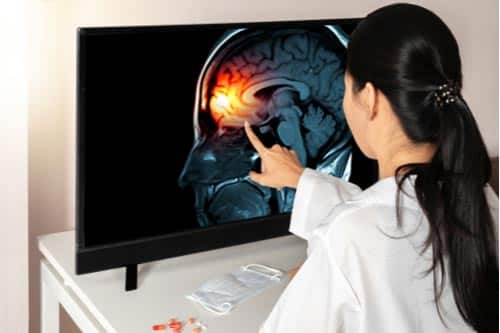
What Are the Symptoms of a Traumatic Brain Injury?
TBI symptoms are very diverse in terms of how they affect the patient, how severe they are, and when they appear. A person may suffer from a TBI and not experience any symptoms for several days. It’s important to immediately speak with a medical professional if you were in an accident and begin to experience these symptoms. They include:
- Seizures
- Fatigue
- Memory loss
- Chronic headaches
- Dizziness
- Emotional instability
- Light sensitivity
- A lack of balance
- Inability to concentrate
Why Is It Important to See a Doctor After a Head Injury?
You should immediately seek medical attention after experiencing a head injury even if the injury does not seem severe. Only a trained professional can fully diagnose the severity of the injury. Brain injury symptoms can become progressively worse over time without proper treatment. TBI patients have an increased risk of mortality and a shorter life expectancy than normal patients. The mortality rate is even higher in patients who do not receive treatment or rehabilitation.
Receiving a medical diagnosis is also important from a legal perspective. An official diagnosis from a doctor will make it possible to seek compensation if a third party was involved in the accident. Doctors produce reliable records that will be very useful during negotiations or a trial.
Why Should I Hire a Traumatic Brain Injury Lawyer?
Our role as Santa Ana brain injury lawyers is to help you receive financial compensation from the party responsible for your injury. TBI cases in Santa Ana involve complicated legal issues and tedious legal processes. It’s always best to navigate these waters with a professional who understands personal injury law and has experience handling TBI cases in the local area.
Can Insurance Companies Obtain My Past Medical Records?
It’s not uncommon for an insurance company to request medical records from long before the accident. Some insurance companies go as far as to request medical records from the patient’s entire lifetime. However, they do not have an inherent legal right to see these records. They must request the records and you must sign the request. Denying the request may make it difficult to receive compensation.
What Happens if the Insurance Company Refuses to Pay My Medical Bills?
Insurance providers are more than happy to refuse payment if they feel they have any sort of legal standing. The first step is to read the documentation to determine exactly why the claim was denied. There may be an error that can be corrected so that payment continues to go through. In most cases, you have a legal right to appeal the decision. We will work with you to overturn the denial and ensure that the insurance company covers its expenses.
What Compensation Can I Receive for a Brain Injury?
Calculating your compensation amount isn’t as simple as adding up your various medical bills. There are several different factors to consider that will determine how much you are owed. They include:
- Past Medical Bills: These are all of the medical bills related to injury, including surgeries, doctor’s visits, prescription medication, and rehabilitation.
- Future Medical Bills: These are the bills that you haven’t received yet but are likely to receive in the future. These often include ongoing prescriptions and treatment costs.
- Lost Wages: If your injury left you unable to work for some time, then you are owed compensation for those lost wages.
- Non-Economic Damages: These are expenses that aren’t clearly defined with bills or receipts. They include emotional damage and suffering that occurred because of the injury.
Are There Time Limits for Filing a TBI Claim in California?
Yes. A TBI claim is classified as a personal injury claim. You have exactly two years from the time of the accident to file a claim in California. Don’t wait to contact a Santa Ana traumatic brain injury lawyer.
Contact Our Santa Ana Traumatic Brain Injury Lawyers Today
Suffering from a TBI is always difficult even when the injuries are mild. It’s even more difficult when the responsible party refuses to provide compensation. Our experienced legal team at Crockett Law Group will fight every day to get you the compensation you are owed so that you can focus on recovery and rehabilitation. Take the time to call our Santa Ana office at (888) 965-3827 to receive a free case review.














































